Minced Oats
Americana bluegrass band performs in Charlotte Page 8


Americana bluegrass band performs in Charlotte Page 8

LIBERTY DARR
STAFF WRITER
Although much of Chittenden County remained relatively unaffected following historic flooding that devastated most of the state this month, officials are warning that conditions in Lake Champlain could begin to worsen as flood waters subside.
Spotted turtles remain threatened in Vermont

16
What has already been a harsh year for toxic cyanobacteria blooms is likely to intensify as flooded river waters dumped massive amounts of sediments, nutrient pollutants and debris into the lake, said Ryan Mitchell, a communications coordi-
See LAKE CHAMPLAIN on page 11
COREY MCDONALD
STAFF WRITER
Peggy Dippen was living with her roommate in Monkton when she was offered a hit of weed.
At 36 years old, it was her first experience smoking pot, having stayed away from it for much of her life. But she decided to hell with it, her life was in shambles, and she was feeling suicidal — so why not.
“I thought, what the heck, it can’t make it any worse,” she said. “Within a few seconds, I was like ‘Oh, it’s not so bad.”
For a moment, she was jolted out of her regular thought patterns — the feelings of self-doubt and worthlessness subconsciously arranged over a lifetime — and briefly thrown out of “that thought process of negativity” that was “imprinted at such a young age.”
It was a pivotal moment, one that would eventually lead her to explore using other substances like MDMA, ketamine and psilocybin
— the naturally occurring psychedelic compound produced in magic mushrooms — as part of a journey unraveling long-held childhood trauma. It was, she said, “the first time that I felt beautiful and lovable, and that I had the capacity to love myself, which I had never been able to do.”
A longtime public-school teacher, Dippen has shifted her work a bit. She’s spent the past several years training as a real dialogue specialist with the Institute for Dialogue Therapy, and is a mindfulness-based psychedelic therapist and cannabis-assisted psychedelic therapist — having trained at the Center for Medicinal Mindfulness in Boulder, Colo.
Since cannabis’ legalization in Vermont, Dippen, a Hinesburg resident, has worked with at least 40 patients in her practice — helping guide patients through their own

“Animal Dance,” an immersive moving dance performance, comes to Charlotte Sunday, Aug. 6, 7 p.m., at Horsford Nursery, Route 7.






“Animal Dance,” directed by Hanna Satterlee, and its artistic work highlights the sentience shared between species, honoring the ephemeral language of the body in motion. Productions are designed to support independent artists, through informal and formal performances, artists’ exchange groups, and classes



and workshops. Satterlee creates performance experiences and conceptual artworks for stage, site and film. Performers will move around the nursery, requiring the audience to travel from site to site together as a group. Featured artists include Mary Jo Cahilly-Bretzin, Millie Heckler, Isadora Snapp; Maaura Gahan and Otto Muller; Aly Perry and Andy Butterfield; Nicole Dagesse; and Sophia Wright Emigh. Tickets at horsfordnursery.com.




Vermonters affected by flooding will have more time to file and pay some state taxes, officials said.
The due date for state sales, rooms and meals taxes will be extended, Gov. Phil Scott said at a press conference in Berlin on July 19.

Taxes that would normally be due to the state anytime between July 7 and Nov. 15 will now be due by Nov. 15, Scott’s office said in a follow-up press release. The new deadlines are in place for the corporate and business tax, sales and use tax, meals and rooms tax, payroll withholding tax, estimated personal income tax, and personal income taxes that are being paid on an extension.
Internal Revenue Service officials announced last week that those impacted by the flood would also be granted extensions on federal tax payments: Filing deadlines for quarterly income tax payments (normally Sept. 15) and quarterly payroll and excise tax returns (normally July 31 and Oct. 31) were also moved to Nov. 15.
The new state tax extensions will be automatically implemented for those affected by flooding, the governor’s office said, although in some cases, officials may ask for “proof of hardship.”
“Taxpayers not impacted by the flood are expected to file and pay taxes by their original due dates,” the governor’s office said in the press release.
Craig Bolio, the commissioner of the Vermont Department of Taxes, said in an email that officials will “be giving people the benefit of the doubt, and reviewing cases that look suspect or abusive.”
Officials also provided an update on the Federal Emergency Management Agency’s work in the state since the flooding.
FEMA federal coordinating officer William Roy said at the Berlin press conference that the agency had 331 officials currently deployed in the state. As of July 18, FEMA had received 991 requests for home inspections from people seeking assistance. The agency had so far inspected 177 homes, Roy said.
Last week, President Joe Biden declared a major disaster in six Vermont counties — Chittenden, Lamoille, Rutland, Washington, Windham and Windsor — making residents there eligible for FEMA aid. On Friday, FEMA announced added Caledonia and Orange counties to the list.
State tax deadlines for Vermonters affected by flooding will be extended until Nov. 15, officials said last week. Meanwhile, the Federal Emergency Management Agency has begun paying out hundreds of thousands in aid.
That initial declaration was made “via imagery,” Roy said, adding that FEMA officials have completed damage inspections in other, non-declared counties.
“I believe in a very short period of time we’ll hear about the potential for additional add-on counties,” he said.
Also at the press briefing, Emily Hawes, the commissioner of the Vermont Department of Mental Health, urged Vermonters to care for themselves and their loved ones.
“As we come together to rebuild what was damaged and lost, I want to emphasize the importance of prioritizing the wellbeing of our communities,” Hawes said. “This means addressing the crucial impact of natural disasters on our mental health.”
FEMA officials going door to door had visited 1,980 homes and 144 businesses, Roy said. As of July 18, 1,644 people had signed up for FEMA aid, he said, and the agency had approved more than $700,000 in payouts, with an average amount of $6,100 per person.
Some people began to receive money in their accounts last week, Roy said, and the agency expects to pay out much more. The program has not yet been live for a week, he noted.

“We’ve just started,” he said.


Residents in acute or chronic mental distress are encouraged to call the state’s Suicide and Crisis Lifeline at 988. Hawes also advised Vermonters to avoid misinformation and limit their consumption of distressing news.

She encouraged people to practice selfcare: take breaks, stick to a routine and maintain a supportive social network.
“The resilience of our community starts with our commitment to taking care of ourselves and our neighbors,” Hawes said. “We are in this together.”
Total incidents: 60
Traffic stops: 13
Arrests: 0
July 14 at 6:25 a.m., damage to a motor vehicle was reported on Route 116.
July 14 at 9:06 a.m., lost property was reported.
July 14 at 8:07 p.m., an officer responded to Charlotte to assist first responders with a two-car motor vehicle crash.
July 15 at 7:42 a.m., officers responded to Jourdan Street for the report of suspicious activity in the area.
July 16 at 3:43 p.m., an officer helped to resolve a custody issue on Route 116.
July 16 at 4:00 p.m., an officer responded to Jourdan Street for a resident dispute.
July 16 at 3:22 p.m., littering on Route 116 investigated.
July 19 at 7:10 a.m., an officer responded to Shelburne Falls Road for a traffic hazard involving livestock in the roadway. The cow was moved.
July 19 at 1:40 p.m., damage to property on Texas Hill Road was reported.
July 19 at 5:00 p.m., someone reported of suspicious activity on Farmall Drive.
July 19 at 10:15 p.m., areport of suspicious activity on Commerce Street.
July 20 at 7:30 a.m., an alarm acti-
Advertising Wendy Ewing wendy@shelburnenews.com (802) 985-3091 x12

Advertising Director Judy Kearns judy@otherpapersbvt.com (802) 864-6670 x21
News Editor Tommy Gardner
Staff Writers
Aaron Calvin Corey McDonald Liberty Darr
Production Manager Stephanie Manning stephanie@shelburnenews.com
Editor/Publisher Gregory Popa gpopa@stowereporter.com
vated on Commerce Street.
July 20 at 11:50 a.m., officers responded to the report of suspicious individuals on Lincoln Hill Road.
July 20 at 6:00 p.m., police served paperwork on Southwind Road.
July 21 at 6:19 a.m., a report of suspicious behavior on Blueberry Hill.

July 21 at 4:00 p.m., an officer investigated the report of erratic operation of a motor vehicle on Route 116.
July 21 at 4:25 p.m., an officer assisted the highway department with removing a tree from Route 116.
July 22 at 9:10 a.m., an officer investigated a single-car motor vehicle crash on Haystack Road.
July 23 at 4:35 p.m., the report of off-road vehicles operating on Drinkwater Road was investigated.
July 24 at 7:35 a.m., someone reported suspicious behavior on Magee Hill Road.
July 24 at 5:15 p.m. an officer responded to Route 116 for a three-car motor vehicle crash.
July 24 at 8:40 p.m., an officer investigated the report of a stolen car on Hayden Hill West Road.
July 24 at 10:10 p.m., an officer assisted first responders with a medical emergency on Farmall Drive.
Billing inquiries Leslie Lafountain leslie@stowereporter.com (802) 253-2101
Advertising submission deadline: Friday at 5 p.m. advertising@thecitizenvt.com classifieds@thecitizenvt.com
Editorial submission deadline: Friday at 5 p.m. news@thecitizenvt.com
Calendar submission deadline: Friday at 12 p.m. news@thecitizenvt.com
Contact: 1340 Williston Road South Burlington, VT 05403 (802) 985-3091
It’s so fun when field trips come to the Statehouse. This spring, one group was visiting my committee room and I asked, if you could make a law, what would it be? One little cutie, who should be president someday, said, “I would make a law that puppies are allowed everywhere.”
Yes. I’ll co-sponsor. But it wouldn’t go very far. It would, as we say, sit on the wall. In my committee room, we don’t hang things on the wall, so we have two rolling bulletin boards, but other committee rooms have bulletin boards actually on the wall. Each bill gets its own little index card, and as it comes into the room, we stick it on the wall with a thumbtack. As it progresses through the legislative process, the bill moves to different sections of the wall. How does a bill get on the wall in the first place? It’s spon-
sored by a legislator or group of legislators and then written with the help of legislative counsel, who are the lawyers who work in the Statehouse. Then the sponsor introduces it to the committee that has jurisdiction over that matter.



The puppy bill would definitely sit on the wall and be stuck there for the biennium. Some people don’t want puppies in a restaurant kitchen, and some people don’t want puppies in the operating room while they’re getting their appendix removed. (I can’t imagine why, but fine.) If I wanted to, I could reintroduce the puppy bill every term, but I doubt it would ever get traction, unless a puppy became the governor.
The bills that don’t sit on the wall move forward because they have support from someone or someone who agrees that it’s a priority: the leadership of a political party; the committee chair or vice chair; the Speaker of the House; the Senate president pro tempore; the governor; or


someone who has the ear of those people, like a lobbyist or political action group.
Since it was my first year and I wanted to listen and learn before I jumped into anything, I didn’t introduce any bills this past session. You can see which bills I co-sponsored, though, on my page on the General Assembly: bit. ly/3O6P9Ct.

Some of the bills I co-sponsored made it all the way to the end, like Act 14, also known as the shield law, which protects health care providers from litigation from other states if they practice reproductive or gender-affirming health care on patients who are from states that ban that health care. I’m proud to be a part of this one.
Some of the bills made it almost all the way, like H.281, which later was merged with S.39, a bill to raise legislative pay. It passed in both chambers, was vetoed by the governor, and since I’m not a reporter anymore, I can do some mild rumor-peddling — I
It’s embarrassing and painful to realize how uncomfortable I was in the past using gender neutral pronouns in an out loud, openhearted way.
Embarrassing because I made it about my fear of making a mistake. Painful because it hurt others.
Let me be clear, when someone’s pronouns are they and them, I want to use they and them (or any other pronoun expressed). And yet, in day-today life, I was afraid of getting it wrong. Or, in some regrettable amnesia, I’d forget altogether. I got so discombobulated, I’d actually be in conversations where I’d try to use no pronouns at all.
Everything changed when I realized the terrible impact of

not being thoroughly, wholeheartedly invested in getting it right. Because when we know someone’s pronouns and don’t use them, it’s a micro-aggression saying, “You and who you are does not matter.”
I’m sure for many, misgendering, whether or not unintentional, is out of alignment with their values of respect and fundamental human rights. I’m specifically not talking about haters here; I have no words for them. I’m talking about the many cisgendered people I’ve met who express difficulty using or even trying to use different pronouns when asked; some who act like it’s no big deal to constantly misgender. I’ve heard many excuses. But really, is there any excuse that rationalizes disrespect?

This first excuse used to be mine: “I’m afraid I’ll get it




wrong.” A simple sentiment that I now see as alarmingly consequential. Discrimination can spread by kind people not wanting to err, be uncomfortable or practice something unfamiliar to their experience.
“It’s not grammatically correct” is another common excuse. This is flat out wrong. They, them and their have long been used as singular pronouns, such as, “What is their name?”
The Oxford English Dictionary traces this usage back to 1375. Whether you are aware of it or not, everyone already uses the singular they.
Further, for those grammar sticklers, even Merriam Webster states one of the definitions of they is “used to refer to a single person whose gender identity is nonbinary.”
Many complain that “it’s too hard.” I think we can all agree that this excuse falls tragically


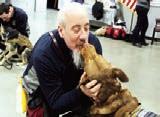
with hearts full of hate. Not all that long ago, we had hateful people running around wearing white gowns with hoods so that their identities could be hidden from view. Today, there are those who are quite comfortable with their hate and display it publicly.
We’re not talking about the average Joe here. We’re talking about national figures, politicians who feel that it’s OK to demonize certain segments of our society. They see a twisted, perverted advantage to marginalizing and attacking those American citizens who they deem to be different — people they fear.
Every day we see more attacks on the LGBTQ community, people who have done no harm to anyone yet are being made out to be the people who are destroying America. They are not destroying America.
who were assigned female at birth but took on masculine roles.



Research shows that more than 150 different pre-colonial Native American tribes acknowledged third genders in their communities. That may have been a unifying feature of different pre-colonial cultures.
Historians have also documented the highly regarded role of spiritual leaders in pre-colonial West Africa who were assigned male at birth but presented in a feminine manner, the existence of Muxes in Zapotec culture in what is now southern Mexico, Bakla in pre-colonial Philippines and Hijra in South Asia. All these individuals were assigned male at birth but their gender expression and/or community role was more feminine.
wrote about self-identified as third gender — some of them were conquered warriors who were forced to dress femininely.
Interpretations of the role and standing of Two-Spirit and third gender people varied by tribe. What is clear from these accounts is that gender and sexuality was certainly more fluid in Native American society than it was in European society.
Is it our European ancestry that causes us to look down upon those who are different? Is our fear and hatred of those who are different baked into our DNA, or is it more likely that it’s learned from our ancestors, handed down from generation to generation?

uncomfortable with this idea. That’s too bad. It says to me that they may either have some concerns about their own identity or are simply fearful that someone in their family might be gay or transgender. I feel badly for these folks that they are unable to love a child or sibling because of sexual orientation.

Then you have the worst kind of Americans: the politicians who have decided that this minority of Americans should be singled out. I guess now that they’ve overturned Roe v. Wade that they need a new scapegoat.
“Choose
From the Human Rights Campaign: “Most known scholarship about pre-colonial American sexuality and gender comes from the journals of early European colonizers. The most prominent accounts note seeing men married to men, whom they called “berdache,” and “passing women,”
By no means did all pre-colonial Native American communities accept or celebrate gender and sexual orientation diversity. Often when tribes were conquered, they were taken as slaves or forced to submit sexually to their conquerors.
However, we also know from writings of the European colonizers that not everyone they
For some Americans, it is difficult to accept that people of the same sex might just love each other more than some heterosexual couples. The question that should be asked is: Who’s being harmed?
I was working in the Vermont Statehouse when the marriage equality bill was passed. I spent over three decades in that building. I have never, ever seen such an outpouring of love in my entire life. People were shedding tears of joy, hugging one another and celebrating an initiative that recognized something that should have been no big deal — that people should be free to love and marry whoever they want to.
However, some folks are very
continued from page 5
heard that the bill was one vote away from having enough support to override the veto, and that one Democrat held out in the Senate.
(See, it’s not all partisan!)
According to the Pew Research Center, roughly 5 percent of Americans are transgender, to which I would reply, “So what?” I could care less if two people of the same sex in northern Vermont get married. I could care less if an individual struggling with their sexual identity decides to change their gender. These folks are causing me no harm whatsoever.

You know who is? People who hate. People who demonize. People who seek to divide us. We could learn a lot from Native Americans who were here before us. Show some tolerance. Stop being mean. Choose love.
Bob Stannard has been a Vermont political commentator for over two decades. He is an author, musician and former state legislator and lobbyist.

way herstudents“transferable skills.”Transferableskills required forgraduation.“They’reskillslike communication that go beyond thetextbook,thataremorepractithoseskills build communityconnections,” Beerworth’s assignment 120students write letter elderlyperson.Some her studentshavewrittenlettersto owngrandparents,manyhavewritseniorresidentialfacility Vergennes. students written Beerworth’sneighbors. The assignment was due last week, many thelettersare justarriving. herstudents
I know this is an unpopular bill, and if you think it’s self-serving to give ourselves a raise, hear me out: If you believe that legislators don’t deserve a pay raise because they’re all rich people who can afford to be there, then that’s exactly why this bill is a good idea. It makes the job possible for more Vermonters, not just ones with money, or who are retired, or who have a spouse or partner who can support them financially and with health insurance.

It opens the door a little wider for a more socio-economically diverse group of people who are more representative of our population. I doubt it will move forward next session because it’s not cute for people to give themselves a pay raise in a campaign year, and because perhaps some people don’t want to invite competition to the table before an election, but I still support it and
would whole-heartedly vote for it again.
Finally, some of the bills I co-sponsored went absolutely nowhere, like H.168, which would establish a statewide database of military veterans, reduce motor vehicle fees for veterans and exempt military pensions from state income tax. It’s still sitting on the wall where it was parked at the beginning of the session, but I’d love to see that one move forward, too. There are only seven states that make veterans pay income tax on their retirement earnings, and we’re one of them.
If you have an idea for a bill, you can let me know, and we can work together to see if we can make it happen. That’s part of my job. You can contact me at cevans@leg.state.vt.us or 917-887-8231. I probably won’t be able to push forward the puppy thing, but a gal can dream.
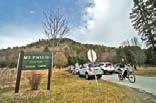
The Vermont Philharmonic will play its annual outdoor Summer Pops Concerts at Moose Meadow Lodge, 607 Crossett Hill Road in Duxbury, on Sunday, Aug. 13, 4 p.m., and at Shore Acres Inn in North Hero overlooking Lake Champlain on Saturday, Sept. 2, also at 4 p.m. Led by music director Lou Kosma, the orchestra will offer selections from musicals such as “The King and I,” film (“Lord of the Rings”) and orchestral classics such as “Hungarian March” from Hector Berlioz’s “The Damnation of Faust.” The program will also feature two works by young Vermont composers, Chase Ehrlich’s “Spirit of the Sky” and Callum Robechek’s “And in a Moment,” along with audience favorites “Bohemian Rhapsody” and “Take Me Out to the Ballgame.” The program concludes with “Stars and Stripes Forever.” Tickets and information: vermontphilharmonic.com.
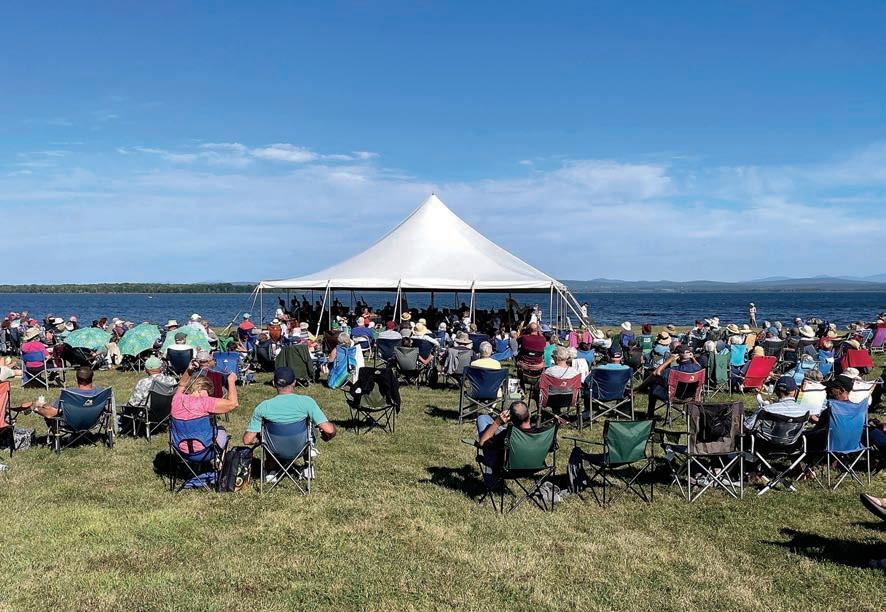
continued from page 5
short regarding issues of civil and human rights. More important, who has the real hardship here?
I suggest it’s the person who is misgendered day in and day out, month after month, year after year.
For those who have expressed they are “too old to change,” I don’t buy it. After all, I’ve seen them using iPhones, streaming services and social media. Unfortunately, this excuse sounds awfully close to the most heartbreaking one I’ve heard, “I can’t be bothered.” This from a family member who was asked by a loved one to use their, they and them pronouns.
Others act like it’s a huge inconvenience to even try. I can’t imagine the pain of being in relationships where my identity itself is not worth someone’s effort and respect, let alone championing.
To anyone who continues to use any excuse, I’m left with only one question. What would love do? I’d espouse when someone tells us their pronouns, love would believe them. Love would ask someone what their pronouns are. Love would respect the human right for every individual to identify one’s self.
In “Atlas of the Heart,” Brene Brown explains that belonging is


a “critical component of diversity, equity and inclusion.” Adding, “In the absence of love and belonging, there is always suffering.”
After all, as Audre Lorde wrote, “It is not our differences that divide us. It is our inability to recognize, accept, and celebrate those differences.”
For cisgendered people unaccustomed to using different pronouns, remember it’s not about never making a mistake. What matters is that we care. That when someone tells us their pronouns, we’re all in and any discomfort in practicing something different is nothing compared to the impact of someone being misgendered.
apologies and justifications only bring focus to one’s self.
So what if you accidentally misgender someone?
The National Institute of Health writes, “Being misgendered (i.e., being referred to with incorrect pronouns) can be an extremely hurtful and invalidating experience. Intentional refusal to use someone’s correct pronouns is equivalent to harassment and a violation of one’s civil rights.”
Simply apologize, correct yourself and move forward in the conversation.

Because what matters is that it matters.
So what if you accidentally misgender someone? Simply apologize, correct yourself and move forward in the conversation. Importantly, don’t make a big deal, like saying, “I feel bad!” or “I’m trying hard!” Excessive
Let’s face it, it’s not just about a pronoun. Far from it. Fact is transgender, nonbinary, and gender-diverse individuals are currently experiencing shocking and growing amounts of discrimination and violence. Fact also is each one of us can be a strong voice in opposition to such hate. And, yes, for some, it can begin with a pronoun.
Carole Vasta Folley is an award-winning columnist and playwright. Read more at carolevf.com.
Award-winning group of community weeklies with offices in Stowe, Morrisville and South Burlington seeks a sales person. Ideal candidate should have a basic knowledge of the local towns, business and communities we serve. A proven track record in sales and an ability to offer topnotch customer service is a required. In addition to servicing established accounts, candidate must be able to generate sales from qualified leads as well as establish new ones. Our company offers health benefits, vacation time, and provides on the job training in newspapers sales. Generous base salary during training and ideal hours (few nights or weekends). If you possess these qualifications and would like to be considered, please send your resume and cover letter to: Bryan Meszkat at bryan@newsandcitizen.com.



Bring your friends and family and enjoy a summer sunset over Lake Champlain at the second and third installments of Music at the Beach in Charlotte, with classical music from the Vermont Youth Orchestra quartet.
The last two concert is Wednesday, Aug. 2, with picnicking at 5 p.m. and music at 6 p.m.
Free with season parking pass or paid day pass. Donations are encouraged.
Weather permitting, with the Charlotte Senior Center as the back-up rain location. Updates on Residents of Charlotte VT Facebook page.
Age Well and St. Catherine’s of Siena Parish in Shelburne are teaming up to provide a meal to go for anyone age 60 and older on Tuesday, Aug. 8.
The meal will be available for pick up in the parking lot at 72 Church St. from 11 a.m. until noon and are available for anyone 60 or older. Suggested donation is $5.
The menu is: chicken and
biscuits, gravy, red mashed potatoes, mixed beans, biscuit, pineapple and oranges and milk.
To order a meal contact Kathleen at agewellstcath@gmail.com or 802-503-1107. Deadline to order is Wednesday, Aug. 2. Learn about restaurant tickets to dine at participating restaurants at agewellvt.org.
The Hinesburg Recreation Department presents Summer Concerts in the Park, Wednesday evenings at 6:30 p.m. throughout July and early August at the gazebo behind the Hinesburg Community School in the Village.
On July 2, Shellhouse plays the park.
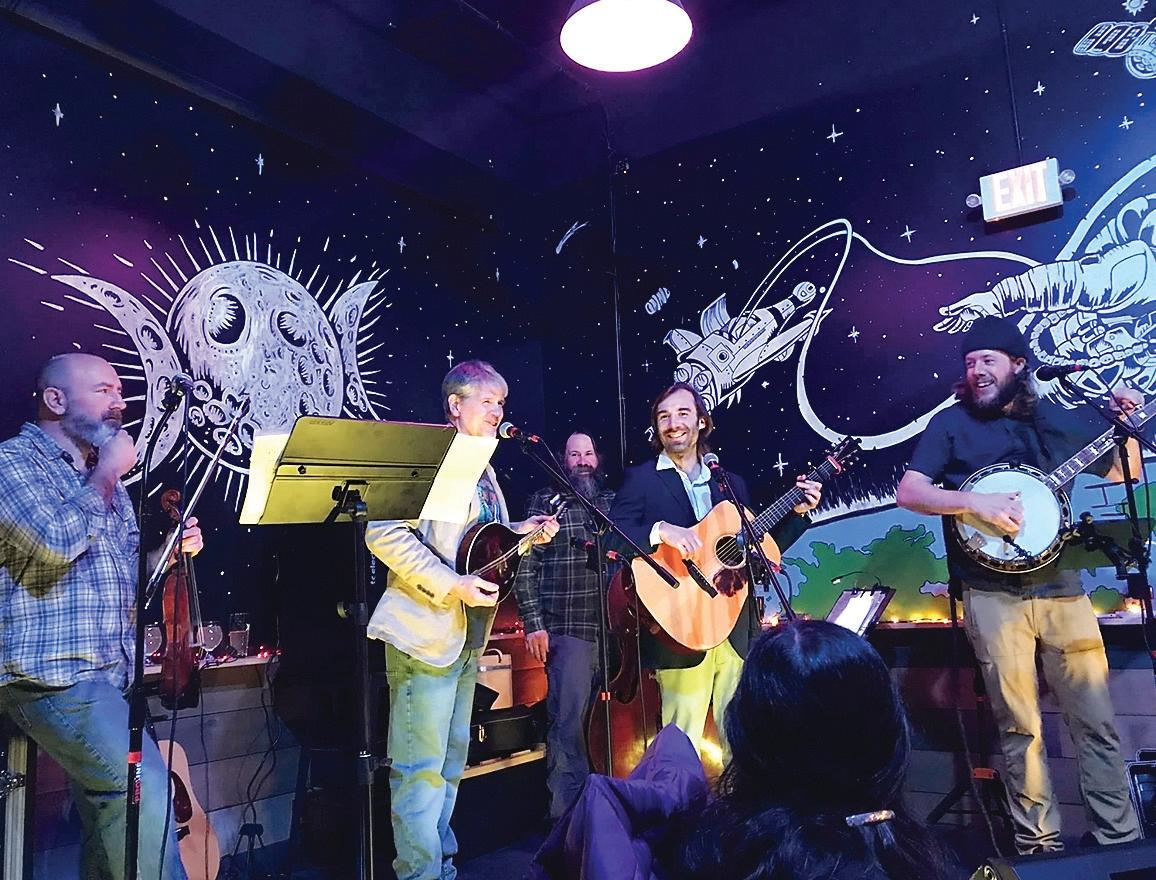

The rest of the summer lineup includes: Aug. 9, Hinesburg Community Band; and Aug. 16, In the Pocket.

The Age Well meal pickup for Thursday, July 27, is from 10 to 11 a.m. at the Charlotte Senior Center features breaded chicken breast, mashed cauliflower, spinach, wheat roll, Craisin and date
The Charlotte Grange invites friends and neighbors to enjoy four evenings of music and merriment on the Charlotte town green every Thursday in July from 5:30 p.m. until 7 p.m. Bring a picnic and enjoy local music in good company. Tonight’s show, July 27, features Minced Oats, neo-traditionalist Americana, bluegrass and folk.
cookie and milk. You must pre-register by the prior Monday at 802-425-6345 or meals@charlotteseniorcentervt. org. The suggested donation is $5. Check the website for last-minute cancellations at bit.ly/3FfyLMb.
Ethan Allen Homestead Museum hosts a Home and Hearth reenactment on Saturday, July 29, 10:30 a.m.-3:30 p.m.
Interact with reenactors as they
cook over an open fire and work on artisan crafts to reenact domestic life in later 18th-century Vermont. The historic Allen House will be open all day for museum guests to speak with and learn from living historians. Free with general admission.
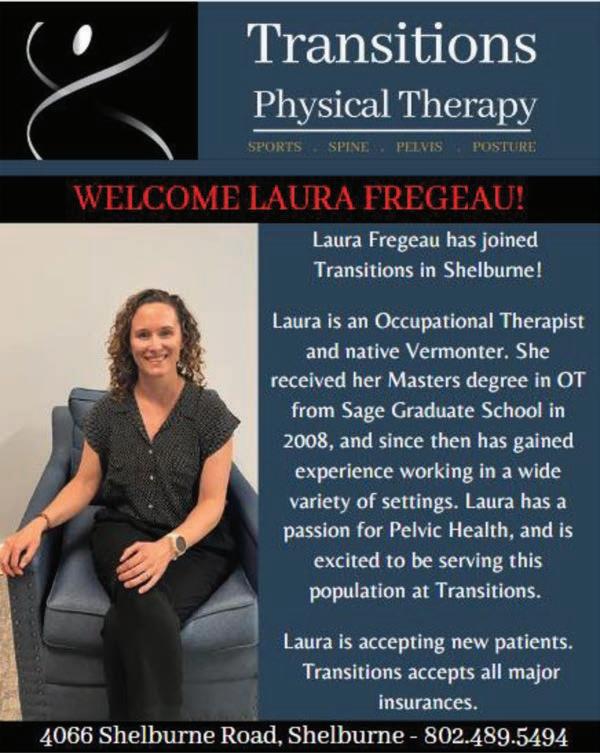

Catherine G. Ross
Catherine “Kitty” Gellert Ross, born in Prague, Jan. 26, 1938, died peacefully at home in Manhattan, on Saturday, June 24, 2023.
A devoted mother, grandmother, sister, aunt and friend, Kitty cherished extended conversations, and will be remembered for her one-of-a-kind sense of

humor. Her family will miss her.
A memorial service will be held on Thursday, Dec. 21, 2023, at 2 p.m. at the Madison Avenue Presbyterian Church, 921 Madison Ave., New York City. A reception will follow.
Donations in her memory may be made to the Jupiter Symphony, 155 West 68th St., Suite 319, New York, NY 10023 (212-799-1259).
Local businesses and restaurants need your support more than ever. Whether you visit stores, get delivery or shop online, keep your spending local and keep your community healthy.
Newspapers are LOCAL. We are dedicated to keeping you informed, safe and connected and care about the issues that are important to our neighbors, our schools and our businesses.
Local businesses and restaurants need your support more than ever. Whether you visit stores, get delivery or shop online, keep your spending local and keep your community healthy.
When you support your local newspaper, you support your community.
Newspapers are LOCAL. We are dedicated to keeping you informed, safe and connected and care about the issues that are important to our neighbors, our schools and our businesses.
When you support your local newspaper, you support your community.
Contact

America’s
America’s
Vermont’s muzzleloader season antlerless deer permit applications are now available.
The Fish and Wildlife Board met May 24 and set antlerless deer permit numbers for the fall deer hunting seasons.
Hunting for antlerless deer will be allowed statewide during the archery season. One deer of either sex will be allowed during the Oct. 21-22 youth and novice weekend hunt.
The muzzleloader seasons on Oct. 26-29 and Dec. 2-10 will have antlerless permits available for 19 of Vermont’s 21 wildlife management units.
Landowners who post their land may not apply for a landowner priority muzzleloader antlerless deer permit. They are eligible to apply in the regular lottery.
“Recent management efforts have successfully balanced deer numbers with what the habitat can support in many parts of Vermont,” said Nick Fortin, deer and moose project leader for the Fish and Wildlife Department. “As a result, the goal is now to maintain current deer numbers in most of the state.”
Deer populations in eight wildlife management units, primarily in the Champlain Valley, remain above their respective population objectives. The goal is to reduce deer numbers in those areas.
The deadline to apply for a muzzleloader antlerless deer permit is Aug. 2.
A teen conservation weekend will be held at the Edward F. Kehoe Conservation Camp in Castleton on Aug. 18-20 for kids ages 15-17.
“Teen Conservation Weekend allows us to provide teens with an exciting weekend of quality environmental education,” said Hannah Phelps, camp coordinator. “Campers will arrive Friday evening and immediately begin participating in Let’s Go Fishing and Hunter Education programing before backpacking out to a remote pond for an evening of camping and fishing.”
The weekend is the perfect way for teens to unplug and engage with peers outdoors before heading back to the classroom. The weekend is capped at 20 participants, but there is still space for new registrants.
Arrival time is 5:45 p.m. Friday, Aug. 18 with departure at 4 p.m. on Sunday afternoon.
All participants will be expected to only bring gear they can carry themselves as they will participate in a backpacking trip to a remote campsite on Saturday evening.

The cost for the weekend is $125, which includes meals. Sponsorships are available.

To register go to vtfishandwildlife.com or email hannah.phelps@vermont.gov.
The Vermont Fish and Wildlife Department and the U.S. Forest Service are conducting four Introduction to Fishing clinics in the Green Mountain National Forest this summer.
“The national forest offers a wide range of fishing opportunities from remote back country ponds to locations with easy shore access and everything in between,” fish
and wildlife education specialist Corey Hart said.
“Join us for a hands-on evening of fishing fun at the first three clinics which will be perfect for those who have never been fishing before or those looking to refresh their skills.
Topics covered will include knot tying, fishing regulations, casting, ecology, and more.”
The clinics will be held: Thursday, July 27, 5:30-8 p.m., Grout
Pond Recreation Area, Stratton; Wednesday, Aug. 2, 5:30-8 p.m., Lefferts Pond, Chittenden; Thursday, Aug. 10, 5:30-8 p.m., Hapgood Pond recreation Area, Peru; and Thursday, Sept. 7, 8 a.m.-12:30 p.m., Little Rock Pond, Mount Tabor Parking Area, Forest Road 10, Mount Tabor. The last program covers all the basics of fishing while focusing on how to fish backcountry ponds. It includes a 5-mile round trip hike to reach Little Rock Pond. Register at vtfishandwildlife.com.
continued from page 1
nator with the Lake Champlain Basin Program, a Congressionally designated initiative to restore and protect Lake Champlain and its surrounding watershed.

“One of the big issues is going to be the huge amount of sediment and nutrients, particularly phosphorus that was discharged in the lake from the rivers, an enormous amount that could potentially set us up for more cyanobacteria blooms later in the summer,” he said.
Phosphorus is one of the nutrient pollutants found in runoff and arguably the greatest threat to clean water in Lake Champlain. Too much phosphorus pollution stimulates excessive growth of algae like cyanobacteria, which can be toxic to pets, people and wildlife environments.
“Early estimations are that Lake Champlain received a year’s worth of phosphorus loading from the event and that some rivers delivered more phosphorus to Lake Champlain during the July 2023 flood than during all of 2022,” Lori Fisher, executive director of the Lake Champlain Committee, wrote in an email to the town of Charlotte.
Cyanobacteria blooms block the sunlight and steal necessary oxygen and nutrients that organ-
isms need to live while simultaneously releasing cyanotoxins, which are among the most powerful natural poisons known, according to the Centers for Disease Control and Prevention. There is no way to tell if a bloom is releasing toxins by just looking at it, and there are no remedies to counteract the effects of the toxins.
“It’s been a bad season for cyanobacteria,” Aaron Brown, the zoning administrator and health officer in Charlotte, said. “I believe I’ve closed lake access points due to cyanobacteria on three occasions already. The increased nutrient content of the water is going to provide food for cyanobacteria. It seems inevitable that warm, sunny weather will cause more algal blooms.”
Mitchell said that the Lake Champlain Basin Program’s scientific staff is still working to try to quantify exactly how many toxins came down the rivers, particularly after a sewer break under the Winooski River was announced last week in Burlington. More complete data will be collected within coming weeks using discharge data from monitoring stations on many of the lake’s tributaries.
“They’re working to come up with a temporary solution to
reduce the effect of that broken pipe in the Winooski by routing a temporary sewer line, and in the short term, the city of Burlington has recommended not swimming within a mile of the mouth of the river,” Mitchell said.
Brown said that it’s difficult to say whether the sewage from this recent line break will directly impact Charlotte, Shelburne or other nearby beaches, but given the tremendous runoff of nutrients and other contaminants, “it’s safe to assume that the lake faces a host of problems. I don’t mean to sound alarmist. I have heard of at least one person who was working in the lake and had an open sore become infected,” he said.
Mitchell said that in the short term, the storm and high-water level circulation knocked down some of the immediate threat of cyanobacteria blooms because the rapid movement of the water helped to break up the algae, but according to the Vermont Department of Health, cyanotoxins from the blooms are released more aggressively when they die and break down.
In addition to cyanobacteria, high levels of E. coli, which is considered to be the best indicator of fecal pollution and the presence of pathogens, are also being
reported. The state threshold for determining the safety of water for swimming is a maximum of 235 parts E. coli per 100 milliliters.
Brown said that Whiskey Bay in Charlotte was over 2,400 parts per 100 milliliters last week and the town beach was over 500 parts. But those numbers frequently fluctuate and are closely monitored by himself and beach staff.
In Shelburne last week, levels were elevated but were still within safe swimming levels under state policy.
“We do not test (for E. coli) every day though, only once a week, so we have been advising swimmers to use caution,” Shelburne’s parks and recreation director Betsy Cieplicki said. “We inspect the water for cyanobacteria on a daily basis.”
Roughly 20 million gallons of water are pumped from the lake each day to supply drinking water to roughly 145,000 people,


but Mitchell said that as of now, there is really no concern over drinking water quality since all the water is heavily treated before being distributed and distribution systems are sealed and there no known breaches.
“Some of the places like camps on the lake that draw their water directly from the lake, that might be a different story depending on how close you are to some of the rivers,” he said.
Both Cieplicki and Brown are urging residents to check town websites before considering swimming as testing is done on a daily and weekly basis.
“This is the time of year when people make fond memories of long summer days spent on the water,” Brown said. “It genuinely breaks my heart to tell people not to enjoy the lake with their families and friends. But I’m afraid that’s where we are.”
Buying and shopping locally helps independent businesses, which in turn helps all of us shape our community’s distinct flavor, personality and character.
“It’s been a bad season for cyanobacteria. I believe I’ve closed lake access points due to cyanobacteria on three occasions already.”
— Aaron Brown, Charlotte health officerPHOTO BY LEE KROHN
For many people, working in a restaurant is just a small part of their journey into adulthood, but for Shelburne resident and Champlain Valley Union graduate, Clayton Murphy, restaurant work is the foundation for a creative passion that has followed him into college: writing.
Although he dabbles in culinary creations and has worked in restaurants since he was 15 years old, his heart really beats for telling — and hearing— stories, something that anyone who has worked in the hospitality industry knows is the makeup of the many hours of pre-dinner and post-dinner service.
The late chef and author of the best-selling kitchen tell-all “Kitchen Confidential,”Anthony Bourdain, once described kitchen work as a messy undertaking, but ultimately a place where “motley misfits can be a family.”
For Murphy, that is exactly the experience he has had, recounting his early days working the dish pit at the first restaurant he ever worked, La Villa Bistro.
“A couple of weeks into working there, the chef pulled me aside, and we really were talking passion and that I really enjoyed cooking and I wanted to get good,” Murphy said. “He recommended ‘Kitchen Confidential’ and I bought it and I read it in maybe two days. I was just completely enthralled. Now, when I wasn’t working, I was reading about working. It was like, ‘This is just really cool.’”
He endured the grueling months of working the dish pit — a practice that many back-ofhouse staff must first master — but the moment a position for a prep cook opened, he leaped at the opportunity to work the line.
“I got on the prep shift and learned how to use a knife, learned basics of kitchens. I was prepping and then finally I was able to get a shift making pizza,” he said. “I was all gung-ho and getting super into the industry.”
When the owners of La Villa Bistro closed their doors and opened Backyard Bistro in Charlotte, Murphy said it was his first introduction to some “higher-brow stuff.”
“There were super skilled people working there,” he said.
Join a dedicated team and contribute to the great quality of life in Shelburne!
Shelburne has an outstanding culture of volunteerism and a full suite of public services, from parks and police to sewage and streets. The Town Manager’s team implements the vision of the Selectboard and leads the Town government. This position requires interpersonal, administrative, and project management skills. They support everything from the Town’s Annual Report to committee meetings, grant reports, procurement, and community events. This is local government at its best!
The Assistant to the Town Manager must be a versatile administrator with both technical and people skills. We are looking for a mix of education and experience showing strong communication and organizing skills, multitasking, and understanding of local government context and ethics. Government experience is a plus, but skills from the business, nonprofit, and education sectors transfer well.
Our pay range for this position is $22 to $27 hourly, depending on qualifications. The Town’s strong benefits include excellent healthcare and pension, leave and holidays, and more.
A complete job description is available at www.ShelburneVT. org/Jobs To apply, send a Town application and/or resume to SCannizzaro@shelburnevt.org. Our review begins immediately. Equal Opportunity Employer.
“I love talking with these guys who have been in the industry for their entire life and don’t know anything else other than cooking and the stories that some of these guys told me just were awesome.”
He described his time learning in the kitchen as the first time he began to strike out as an individual — his first time actually being proud of something that was completely his own.

“It was really the first time where I completely, on my own, discovered something that I got energy and passion from. Because it was really its own separate thing from all other aspects of my life,” he explained. “That was really powerful.”
But channeling his charismatic energy would take some time, training and a helping hand from
chef John Patterson at the Shelburne Farms Inn.
Patterson, a Philadelphia native, has been working in kitchens for more than 20 years specializing in fine dining and farm-to-table experiences before coming to Vermont in 2019 — a place where farm-to-table takes an even more literal meaning.
“There’s just such a unique opportunity here where literally the tabletops are made on the farm,” he said. “The food that you’re getting is coming from a half mile across the farm. A lot of chefs have either signature dishes or styles, but it’s just based on the season here.”
He said the seasonal kitchen crew at the inn is younger than crews he’s dealt with in the past, which has opened a new avenue of mentorship to his career.
always loved to cook since a young age, but ultimately chose against going to culinary school and is instead pursuing journalism and photography at the University of Montana. But he says, the world of writing doesn’t differ much from the skills he learned working at restaurants.
“I remember talking to someone a couple weeks ago and telling them I’ve been working in kitchens, but now I’m studying journalism, and they said, ‘Wow, that’s quite the change of pace. Those are two completely different careers,’” Murphy said. “There’s a lot of similarities. It’s talking to people and getting inspired by all these stories that you wouldn’t hear otherwise. There is definitely a pretty unique bond.”
Hinesburg Development Review Board

Tuesday, August 15, 2023 7:00 pm
Ken Martin – Conditional Use Home Occupation for a transportation (bus) service on a property located at 64 Major Street in the Shoreline Zoning District.
The meeting will be both in person and remote. See meeting agenda on town website with details on how to participate.
“I really love building teams,” Patterson said. “I really love the mentorship, teaching. I had the experience of working for some really great chefs and really great restaurants. Now it’s more exciting for me to be able to pass some of that knowledge down to people who really want it and want to be able to learn and are interested in working in this for their own sake of they’re inspired by it.”
Murphy said that he has
FOR SALE:
KITTEN: Sweet, mostly black three-month-old female kitten ready for adoption. She’s spayed, chipped and had first round of vaccinations. Small adoption fee to help defray vet costs. Contact: pserisky@ gmail.com if interested.
Patterson said Murphy’s always been interested in learning to cook, but since starting to write more he’s much more interested in the dynamics of restaurant work.
“He takes it beyond just learning how to cook,” Patterson said. “He’s interested in the process. How does the kitchen work and how do you have different team members and different people that all have their own unique qualities, how do you bring that together and make it a really dynamic workplace?”
Although dorm life has slightly stifled his ability to flex his culinary muscles, he says he still makes a regular effort to visit friends that live off campus and make dinner for everyone.
“I had a review with chef John toward the end of last season,” Murphy said. “He said something along the lines of, ‘Motivate yourself to be better every day. Every day. No matter how big or small the step.’”
PSYCHEDELICS
continued from page 1
spiritual journeys, using cannabis as a catalyst to help folks tackle their own trauma. Now, she’s begun advocating for further research into psychedelic’s medical use.
Her first public presentation was held last week in Hinesburg.
By talking about psychedelics, and by talking about her own journey, she hopes to help destigmatize the use of psychoactive substances that growing research shows contain untapped potential in treating a variety of mental illness — from depression and post-traumatic stress disorder to generalized anxiety.
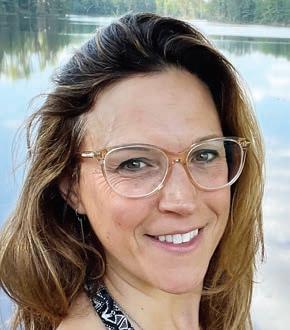
“I hope that being vocal about it now and advocating and talking about how it’s transformed my life within the last five years can help continue the forward movement around psychedelics helping with transformation and healing,” she said.
It’s a Tuesday evening, and Dippen is with a group of about a dozen residents in the Carpenter-Carse Library chatting about why they think psychedelics are experiencing their current resurgence.
“Well, there’s certainly a lot of trauma,” one person said, a sense of “really feeling useless.” Another resident suggests it’s all part of the timeless human “quest for finding real meaning in life.”
Dippen listens with a halfsmile as the group speaks.
Using psychedelics in ritualistic settings is nothing new, she explains, scrolling through slideshows of psychedelics’ use in history. The first use of cannabis dates to 2800 BCE, for example, and there are multiple examples of books and authors who have supported its use, and recent medical literature reveals its potential in treating a range of conditions.
After decades of anti-drug campaigns, mind-altering compounds like MDMA, LSD, magic mushrooms — even cannabis — are having a moment in the medical and psychiatric community for their potential in treating mental health issues.
Perceptions have shifted on many drugs that remain federally illegal, and in the medical community, which has made little progress in the treatment for mental disorders. Top medical universities, meanwhile — Johns Hopkins, Yale, and Mount Sinai Hospital in New York, for example — recently established psychedelic research divisions or are planning to do so, according to reporting.
Residents of Oregon and Colorado, in 2020 and 2022, respectively, voted to legalize the use of psilocybin. Cities like Oakland, Calif., and Washing-
ton, D.C., have decriminalized it. Soon, according to the New York Times, the Food and Drug Administration could approve psilocybin and MDMA, or ecstasy, to treat depression and post-traumatic stress disorder.
Cannabis, a much gentler medicine in terms of psychedelic intensity, has research supporting its potential mental health benefits when used in a controlled, therapeutic setting. A study, published in February 2023, said that cannabis-assisted psychotherapy could serve as “a novel treatment” for dissociative subtype of post-traumatic stress disorder.
This is all unsurprising for Dippen. She’s experienced the benefits of all these substances firsthand.
Dippen’s entry into our world is unique. Born in Ohio, her mother was an unwed nun who left the convent after getting pregnant, she tells the residents in the Carpenter-Carse Library. She was put up for adoption and has no idea where or with whom she spent the first month of her life.
She was eventually reunited with her mother — who raised her very Catholic — and never did let her forget that she was a mistake.
“Growing up, I had this idea that I didn’t have worth, I didn’t have value,” Dippen said.
She found some of that in school and in basketball, eventually landing in a division 2 basketball program. But she struggled nonetheless through her adolescence and did a suicide gesture when she was 15.
She stayed on Prozac up until her 30s. She moved around and married twice before eventually landing in “a place of full surrender.” While living in Colorado, she “allowed herself to participate” in taking different substances in controlled therapeutic settings.
High doses of psilocybin, she said, led her to have an “ego death” — a complete lapse of subjective self-identity — allowing her to see herself impersonally, taking her outside of herself, reorganize her thought patterns and, in effect, give herself the ability to confront her trauma head on.
A particularly memorable experience with psychedelic cannabis, she said, involved feeling her “entire chest and ribcage kind of splitting open, and all of this lava and flames came out.”
“Because for a majority of my adulthood, I didn’t have this sense of self and courage to say no, because I just wanted so much to be liked and appreciated,” she said. “I was choosing that, but I wasn’t choosing it consciously — I was choosing it based on my upbringing and my pattern
One bill passed this past year, Lyons said, asked the state’s Cannabis Control Board “to work with the medical school and others to look at the outcomes and the benefits associated with cannabis use for various conditions, so that we’re moving forward on medical use.”
Other substances like magic mushrooms remain illegal on the state level. But that could change soon.
“but I think they would agree with me that there are steps that we can take to decriminalize, but at the same time, to ensure that it doesn’t become used inappropriately,” Lyons said.
of behavior. So, it was another releasing of all the anger and rage that I never expressed to the people that I allowed to do things to me.”
Dippen’s presentation was the first in a new series hosted by the Hinesburg Counseling Collaborative. Now entering its second year, the group — founded by Nicole Grubman and Denise Daly — was formed to address “a real need for in person counseling that was accessible to people in the more rural parts of Addison and Chittenden counties.”
On the third Tuesday of every month, the group will be holding free seminars on a variety of alternative health practices to “give people the opportunity to think about mental health and alternative treatments for emotional well-being, and to have those kinds of conversations,” Grubman said.
Next month, for example, someone will be doing a seminar on mindful breathing exercises. Another will be centered on practicing open dialogue.
“It’s not like we’re promoting those kinds of lifestyles, we’re just giving people information and understanding about how there’s different ways of evolving as a person that is out of the box. There are many different ways to do that,” Grubman said. “One is therapy. One would be like meditation. Another one could be psychedelic.”
While cannabis has been legalized in Vermont, there’s been a gap between the use of it recreationally and the study of it for medical benefits.
“As cannabis has become decriminalized, and we’re seeing more and more medical use of cannabis, there’s more and more data indicating that it is an effective treatment for certain condition,” Vermont Sen. Ginny Lyons, who chairs the Senate Committee on Health and Welfare, said. “(But) as we’ve been looking at it, the medical community has actually been less involved than has cannabis community.”
Lyons, one of several sponsors on a senate bill that would decriminalize psilocybin in the state and establish the Psychedelic Therapy Advisory Working Group, said that psilocybin “has a long track record with Native American use, and the shamans have been using it for many years. Now we’re seeing that there are stories that people are telling about how important it has been for them.”
The Senate bill was joined by a similar bill on the House side, crafted by Rep. Chip Troiano, D-Stannard. The chair of the Joint Legislative Justice Oversight Committee, Martin LaLonde, a Democrat from South Burlington, directed its members to return to the matter next year.
While both bills did not gain momentum in this year’s legislative session, there remains interest from senators who are sponsors,
“Our basic goal is to make sure that if and when it’s decriminalized, we are following the right steps, and that we’re going to see some medical outcomes — whether that include counseling or other treatments that go along with benefit,” she said. “It’s not just taking the drug. It’s a broader treatment process.”
For Dippen, there’s an inherent risk to being so open about her work and her story, “but at the same time I’ve found that personally, and from my own experience, it’s been so transformational, that my fear of sharing it is less than the potential of how it can be used to transform other people’s existence and lives,” she said.
“What I’m advocating for is not misuse or recreational use of these medicines,” she said, “but that they have been transformational for me, and if people want to seek them out for their own healing, they can go to places where it’s legal to do so.
“I just have my story, and I’m hoping it offers some kind of hope or inspiration to continue to seek help.”
Notice of Public Hearing to Amend Land Use Regulations
Charlotte Selectboard
Will hold a public hearing on Monday, August 14 at 6:40 PM at Charlotte Town Hall to hear public comment on proposed amendments to the Charlotte Land Use Regulations, re: standards for permitting and regulating cannabis businesses in Charlotte.
The purposes of the proposed amendments include:
(A) Updates to dimensional standards, permitted and conditional reviews in several zoning districts, and other provisions of Charlotte’s Land Use Regulations
(B) Specific review and performance standards for permitting cannabis businesses
(C) New definitions of various types of cannabis businesses and uses
The proposed amendments would affect the whole Town of Charlotte. They include changes to following sections of the Land Use Regulations:
• Chapter 2 - Zoning Districts & District Standards
• Chapter 3 - General Regulations
• Chapter 4 - Specific Use Standards
• Chapter 10 - Definitions
Copies of the proposed revisions, a User’s Guide, as well as a report on how the proposed changes comply with State Statute and the Town Plan, can be viewed at the Charlotte Town Office and on the Town’s website at: https://bit.ly/Cannabis_rules_in_Charlotte. If you are unable to attend this hearing, but wish to offer comments or feedback, you may submit them in writing to Dean Bloch, Town Administrator (425-3071 ext. 5; townadmin@townofcharlotte. com).
continued from page 2
The week-long bait drop is a coopera tive effort between Vermont and the U.S. Department of Agriculture Wildlife Services to stop the spread of the potentially fatal disease.
saliva. If left untreated, rabies is almost al ways fatal in humans and animals. However, treatment with the rabies vaccine is nearly 100 percent effective when given soon after
So far this year, 23 animals in Vermont have tested positive for rabies, and 14 of
We can help you discover, learn about and sell:


Rabies is a deadly viral disease of the brain that infects mammals. It is most often seen in raccoons, skunks, foxes, and bats, but unvaccinated pets and livestock can also get rabies.The virus is spread through the bite of an infected animal or contact with its
RABIES BAIT
continued from page 2
The week-long bait drop is a cooperative effort between Vermont and the U.S. Department of Agriculture Wildlife Services to stop the spread of the potentially fatal disease.
Rabies is a deadly viral disease of the brain that infects mammals. It is most often seen in raccoons, skunks, foxes, and bats, but unvaccinated pets and livestock can also get rabies.The virus is spread through the bite of an infected animal or contact with its
Porches
Outdoor Structures
802-343-4820
www.pleasantvalleyvt.com
Brian Bittner • 802-489-5210 • info@bittnerantiques.com
Showroom at 2997 Shelburne Rd • Shelburne Open Wed-Sat, with walk-ins to sell every Thursday. www.bittnerantiques.com
According to wildlife officials, rabid animals often show a change in their nor mal behavior, but you cannot tell whether an animal has rabies simply by looking at it. People should not touch or pick up wild
saliva. If left untreated, rabies is almost al ways fatal in humans and animals. However, treatment with the rabies vaccine is nearly 100 percent effective when given soon after a person is bitten by a rabid animal.
So far this year, 23 animals in Vermont have tested positive for rabies, and 14 of those have been raccoons.
Bob & Jessica Trautwine
Cell/Txt: 802-233-1451 • O ce: 802-497-1681 Hyperreliccards@gmail.com • hyperrelic.com
According to wildlife officials, rabid animals often show a change in their normal behavior, but you cannot tell whether an animal has rabies simply by looking at it. People should not touch or pick up wild animals or strays – even baby animals.
10 Flavors of Milkshakes Snack Bar • Creamee Window • Hard Ice Cream Propane

9am-6pm • Closed Sun.
802-425-2180
continued from page 4 face burne-Hinesburg head the Golf depending land. Rotary’s
Shelburne Historical Society will have a display and president Dorothea Penar will lead a cemetery tour at 1 p.m. Food vendors round out the event with everything from coffee and lemonade to burgers and creemees. Kids will enjoy meeting animals from Shelburne Farms, craft projects, and
Jackon Hill Road • Charlotte (at Spear and Hinesburg-Charlotte Rd)
continued from page 4 face burne-Hinesburg head the Golf depending land. Rotary’s
SHELBURNE DAY
Shelburne Historical Society will have a display and president Dorothea Penar will lead a cemetery tour at 1 p.m. Food ven dors round out the event with everything from coffee and lemonade to burgers and creemees. Kids will enjoy meeting animals from Shelburne Farms, craft projects, and









for rates: call 985-3091 or email advertising@shelburnenews.com






Spring Cleanup & Mulch
Roofing
Lawn Maintenance
Siding
Renovations
Landscape Design
Stonework & Planting

Mini Excavation
Painting Decks
802-343-4820
802-343-4820
www.pleasantvalleyvt.com

March 21 - April 20
Don’t rush in and act combative this week, Aries. Take a more delicate approach to convince others to see things your way. As the saying goes, “You catch more ies with honey than with vinegar.”
April 21 - May 21
Are you feeling like you may want to be a wellness warrior of late, Taurus? Start by taking inventory of the foods in your home and making some healthier changes.
May 22 - June 21
Gemini, if you are looking to make a few new friends, ask others to connect you with like-minded individuals. You never know who you might meet until you give it a try.
June 22 - July 22
Cancer, if a delicate issue has been troubling you, reach out to someone you can trust and begin to talk things through. You will likely feel better just getting things out.
July 23 - Aug. 23
Leo, are you ready to take your project to the next level? Brainstorm with a coworker about the best way to get ahead and make a mark with this endeavor.
Nov. 23 - Dec. 21
Invite people to stop by and cheer you up, Sagittarius. You’ve been going through a rough patch and there’s nothing like happy faces and new perspectives to bring about a smile.
Aug. 24 - Sept. 22
It could be time for a move and you just aren’t ready to admit it, Virgo. You may have gotten comfortable in one place, but a move could prove the right decision.
Sept. 23 - Oct. 23
Libra, there are a lot of ideas swimming around in your head. You may need to put some things down on paper to see what really might be worth doing in the days to come.
Dec. 22 - Jan. 20
Capricorn, be sure to check your bank account pretty regularly; otherwise, you may lose track of spending and get yourself into a nancial mess that could be tough to get out of.
Oct. 24 - Nov. 22
Connect with a friend or even your partner for an intimate dinner this week. You’ve been moving in different circles and it’s time to get on the same page.
Jan. 21 - Feb. 18
Aquarius, you may be your own worst enemy this week, especially as it pertains to thinking that someone may be trying to cause trouble with you at work. Get the facts before acting.
Feb. 19 - March 20
Pisces, there is a process to everything. Remain patient and stay the course no matter how excited you are. Rest assured that things will work out if you can hang in there.
CLUES ACROSS
1. Bonus materials
7. Formal names
13. Free from restraints
14. One who scrapes away
16. Type of device
17. Skin cancers
19. The Show Me State
20. Plate glasses
22. Red-brown sea bream




23. Small (Fr.)
25. Flightless Australian birds
26. High IQ group
28. Stiff structures
29. Revolutions per minute
30. Where a bachelor lives
31. Licensed for Wall Street
33. A place to park 34. Energy, style and enthusiasm
36. An important creed in Catholic Church
38. 18-year astronomical period
40. Furies 41. Removes from the record

Sudoku puzzles are formatted as a 9x9 grid, broken down into nine 3x3 boxes. To solve a sudoku, the numbers 1 through 9 must ll each row, column and box. Each number can appear only once in each row, column and box. You can gure out the order in which the numbers will appear by using the numeric clues already provided in the boxes. The more numbers you name, the easier it gets to solve the puzzle!
43. Noted child psychiatrist 44. Feline 45. High schoolers’ test 47. Not happy
48. They __
51. On top
53. Precious stones unit of weight
55. Moved quickly
56. Seagulls
58. A seed with hooks or teeth
59. Partner to “oohed”










60. Exclamation of surprise
61. Most unpleasant
64. Organization help service members
65. Type of cockatoo
67. Humorous criticisms
69. Went through and organized
70. Wakes up
CLUES DOWN
1. Settle in tents
2. Big
3. Books
4. Masses of eggs in sh
5. Language
6. Not standing
7. Chinese philosophy
8. Computer giant
9. A device to catch
10. Emits coherent radiation
11. Actor O’Neill
12. Smallest interval in western music
13. Not lower
15. Revolves
18. Leavened bread
21. Number above the line in a fraction
24. Cable
26. Adult male
27. Airborne (abbr.
30. Bull ghting maneuvers
32. Broadcast
35. __ Angeles
37. Vehicle
38. Not religious 39. North American peoples
42. A baglike structure
43. Body art (slang)
46. Picked for a role
47. Actress Tomei
49. Former hoopster “Big Country”
50. Icelandic poems
52. More pleasant 54. It can add avor to meat
55. Self-immolation by re rituals
57. Expression of annoyance

Named for their polka-dot-like markings, spotted turtles have declined throughout most of their range, which stretches from Maine south along the Atlantic coastal plain to northern Florida, and from western New York into the eastern Great Lakes states. This species is listed as threatened or endangered in northern New England states.
While I have never seen a spotted turtle in the wild, I had the chance to see one years ago at the Connecticut nature center where I worked. This turtle was about 4 inches long, with a smooth, black carapace sprinkled with yellow dots. The skin on its head, neck, and legs was marked with tiny yellow speckles. The turtle’s underside, or plastron, was yellow-orange with large black blotches along the edges.
These turtles are semi-aquatic, spending time on both land and water. They travel among a mosaic of wetland types, including ponds, swamps, vernal pools, fens and slow-moving sections of small rivers, foraging there and in woodlands and meadows along their route.
Spotted turtles emerge from
hibernation before other turtle species in our region. They begin swimming as early as late March, when there may still be ice on their wintering ponds. In early spring, they bask on logs, rocks, or shores, soaking up heat from the sun. They also breed at this time. After mating, spotted turtles often move to woodland vernal pools, where they feast on amphibian eggs and tadpoles. In other wetlands, they feed on aquatic insects, small fish, crayfish and plants.
In June, females travel to open, sandy or gravelly areas to lay their eggs. A spotted turtle will dig a shallow, flask-shaped nest about 2 inches deep and deposit two to five ovoid eggs, then fill in the nest and smooth it over. The eggs will hatch in September, and the round, 1-inch, unspotted hatchlings will head for wetland edges to forage.
During summer heat spells, spotted turtles may become dormant for days or weeks, estivating in a dug depression in the ground, in moist hummocks of vegetation, or inside muskrat houses. In September, these turtles travel to hibernation sites on pond bottoms, in underwater rock caves or in hummocks.
The spotted turtle is listed as endangered in Vermont, where there are only three known popula-
tions, all in the southern half of the state. In New Hampshire, where this turtle is a threatened species, it is found mainly in the southeastern corner. In Maine, where the species is also threatened, spotted turtles occur along the southern coast. In southern New England and New York, this reptile is considered a species of special concern.

Spotted turtles may travel up to three quarters of a mile on their annual journeys. According to herpetologist Jim Andrews, coordinator of the Vermont Reptile and Amphibian Atlas, the species’ nomadic lifestyle and use of upland as well as wetland habitats make it particularly vulnerable to habitat fragmentation and road mortality.
The illegal collection of turtles for the pet trade has also contributed to population decline. Because these turtles don’t reach sexual maturity for eight to 10 years and have a low reproductive rate, removing even a few turtles can wipe out a population.
Fish and wildlife agencies in northern New England monitor spotted turtle populations. In many places, they have erected turtle crossing road signs, installed turtle tunnels beneath roads and modified railroad tracks so the animals don’t get stuck while crossing. The conservation of large, intact
wetland complexes and their surrounding landscape is critical to the survival of these turtles, said Andrews.
Spotted turtles tend to hide underwater and in vegetation, making it difficult to find new populations. A new environmental DNA study, a collaboration between the University of Vermont and Vermont Fish and Wildlife Department, will collect water samples and analyze the DNA to detect whether this species occurs in particular waterbodies. If you are lucky enough to see
a turtle with yellow spots, take a photo and report it to the Vermont Reptile and Amphibian Atlas (vtherpatlas.org) or to your state wildlife agency. Watch out for turtles crossing roads, and never remove a turtle from the wild.
Susan Shea is a naturalist and conservationist in Vermont. The Outside Story is assigned and edited by Northern Woodlands magazine and sponsored by Wellborn Ecology Fund of the New Hampshire Charitable Foundation, nhcf.org.